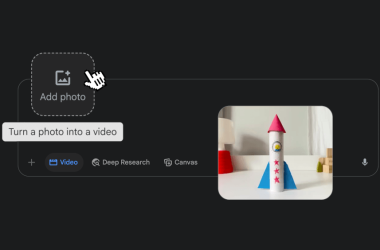 Microsoft CEO Steve Ballmer launched the much-awaited Office 365 yesterday, after a beta program of about nine months, as the company responds — some critics say belatedly — to the rising popularity of cloud-based applications for collaboration and communication.
Microsoft CEO Steve Ballmer launched the much-awaited Office 365 yesterday, after a beta program of about nine months, as the company responds — some critics say belatedly — to the rising popularity of cloud-based applications for collaboration and communication.
“Office 365 is where Office meets the cloud,” Ballmer said at an event in New York.
Office 365 is the next version of the BPOS (Business Productivity Online Suite) collaboration and communication suite. Among the main improvements in Office 365 is that its applications, including Exchange Online and SharePoint Online, are based on the 2010 version of their on-premise counterparts, while BPOS’ are based on the 2007 version, the company said. Office 365 also comes with Lync Online, which is an upgrade to Office Communications Online.
According to Microsoft, Office 365 offers customers the option to have Office productivity applications like Word and Excel either through Office Web Apps — the online version of Office — or through the full-fledged, on-premise Office Professional Plus 2010 delivered via a subscription model.
Office 365 comes in a variety of configuration options, starting from an e-mail only version that costs US$2 per user, per month, to the most sophisticated option with Office Professional Plus and voice communications capabilities with Lync Server on premises, which costs $27 per user per month. Lync Server is the next version of Office Communications Server. A version tailored for small businesses with 25 or fewer end users costs $6 per user per month.
Ballmer stressed that Office 365 is designed for businesses of all sizes. “More than 70% of the about 200,000 companies that beta-tested Office 365 were SMBs,” he said.
Officials demonstrated Office 365 capabilities, like the ability for multiple users to jointly collaborate and edit documents in real time, not only from PC browsers but also from mobile devices.
“Collaboration is critical for business growth,” Ballmer said.
Microsoft also announced that Bell Canada, Intuit, NTT Communications, Telefonica, Telstra and Vodafone are some of the partners that will resell Office 365 with their own services.
With Office 365, Microsoft is responding to an explosion in recent years of cloud-based enterprise collaboration and communication suites from a variety of large and niche vendors alike, including big names like Google, Cisco, IBM, VMware and Novell and specialists like Jive Software, Socialtext, Box.net and Zoho.
The primary competitor is Google’s Apps suite, which industry experts consider the biggest threat to Microsoft’s communications and collaboration products, both on-premise and on the cloud.
Since the announcement of Office 365 in October of last year, expectations have been growing, and Google has been intensifying its competitive rhetoric.
“While Office 365 does put Microsoft in mortal combat with Google, it is not really an existential threat for Google since Microsoft is essentially validating the model that Google pioneered with Google Apps. I would expect that Office 365 actually heightens interest in Google Apps,” Gartner analyst Matt Cain said.
Ultimately, time will tell how successful the concept of cloud-based productivity and collaboration tools ends up being. “Time, and I mean 3-5 years, will prove or disprove the soundness of the model in terms of economics, security, stability and functionality. The first 20% of the business community that moves to the cloud will act as a proxy for the rest of the business world,” Cain said.
In recent months, Microsoft has struggled with several major outages affecting BPOS, which have made some critics question whether Microsoft will be able to live up to its 99.9 percent uptime SLA for Office 365.
With Office 365, Microsoft is also trying to consolidate the branding and technology base for various cloud-based suites it has developed in recent years, such as BPOS, Office Web Apps and Live@edu, the company added.
Overall, Office 365 will offer hosted productivity applications — word processing, spreadsheet and presentations — e-mail, calendar, contacts, instant messaging, Web meetings, videoconferencing, intranet and website creator tools.
Office 365 has also been designed to interact natively with the on-premise versions of SharePoint, Exchange, Lync and Office.
Forrester Research analyst T.J. Keitt calls Office 365 “a solid entry” in the cloud collaboration software suite market whose functionality is either on par with or exceeds that of rival products.
In addition, the different Office 365 options let Microsoft position it for small and medium-size businesses as well as enterprises, where IT administrators get flexibility over the amount of functionality they offer to different types of employees, he said.
“There are obviously issues of feature parity between Lync Online, SharePoint Online and Web Apps, and their on-premises relatives, but Microsoft promotes a hybrid model — keeping some stuff on-premises — that will let enterprises be strategic in what they move to the cloud,” Keitt said.
Existing BPOS customers have a window of 12 months to migrate to Office 365, a process that Microsoft maintains will be straightforward, even for small businesses.
However, Office 365 doesn’t work with some older Microsoft desktop and server software that BPOS still supports, so customers, especially those who want Office 365 to interact with on-premise Microsoft applications, will likely face the need to do software upgrades.
For example, Office 365 can’t be used with desktop Office versions earlier than Office 2007 SP2, which means it doesn’t work with Office 2003 and Outlook 2003.





